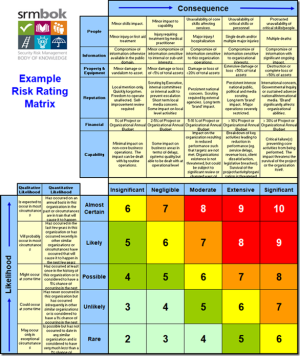Question:
Critical Thinking: All meetings must start with a “Safety” moment/message – but should they?
Like “Safety Stand-downs” – Is this just another example of HSE window dressing, the appearance of doing something in place of actually doing something?
As I question the value of these (if they worked there would be evidence of success?), especially if you attend multiple meetings a day (losing impact / relevance), so I am looking for suggestions or alternatives to these “Safety” messages at the beginning of meetings.
As I am trying to stay away from the word “Safety”, as it has become very binary, however, I am looking for alternative/s to pursue to ensure group active engagement:
Some Responses:
How else do you prove beyond a doubt that “safety is our number 1 priority”? Then move quickly thru it to get on with the really important stuff
- I have been thinking along these same lines for a few years now. I question the trends in safety processes that seem more like ritual than science. The JHA requirement, for example, has lost its purpose. Safety moments do not belong in meetings, unless shared as part of a current campaign – provides current organizational information. If it must stay, then why not END the meeting with the safety moment, so people leave with that as a recent memory?
- In all cultures you will find what is called « rituals ». Introducing rituals can be part of influencing the company culture. One of these rituals can be to spent some time at a safety topic at the start of the meeting. For me there is nothing wrong with that. However, it should not be seen as a panacea. I have no view on all meetings but in the meetings I have been it has always been a nice discussion. It doesn’t take long and the topics were good. Why do we want to discuss about this? If some companies like it then what is the problem? If you don’t like it then don’t do it. There seems to be a trend where people want to pretend to be a « safety guru » by criticizing some practices. I have no problem with people who prefer no safety moment at the beginning, in the middle or at the end of a meeting
- There is nothing wrong with the principle. A ritual – as you put it – is only valuable as long as the people using the ritual find meaning in the ritual. Very rarely have I seen that to be the case as the ritual very quickly degenerates into a meaningless exercise that people want to get out of the way to move on to the ‘important stuff’.
- Hard to suggest a single answer but if the meeting is about something operational it may be better to say what the risk level is and what’s in place to mitigate factors vice some random safety message that may not really go with the meeting to begin with just to check a box. If the meeting is to discuss finances maybe a quick dollar amount on injuries and what’s been spent to reduce it. I’m sure you can see where I’m going with it though. I also think staying away from just safety is good bring in that Environmental and health part also.
- I would offer that an organization has basic goals of success and prosperity. To meet these goals, it is necessary not to destroy (aside from planned demo) things or people. Injuries and fatalities cost time and money. So what if we just addressed effectiveness?A hazard to the workers finger, is the same as any other impediment to the evolution…If we treat safety as an operational requirement, and discuss it in context of the work as we do the specifications of the structure, or that the walls must be framed before the wires are run.
If someone falls in the hole, work has to stop. Operational goals are not met. How do I ensure that people don’t end up in the hole? Telling the workers not to fall in the hole is not a solution, because it doesn’t ensure success.
How much effort goes into selecting a concrete mixture to ensure success? Do organizations just ask for cement, or do they ask for a specific recipe that they believe will get them what they want/need? They also need a specific amount. They want certain weather parameters. They are happy to have the crew work through lunch and breaks, because safety is safety’s problem. Treat it like operational goals and then they’ll do the math… - Safety, or rather OH&S should be a consideration at every part of the meeting. Having a ‘safety moment’ focusses attention briefly and all too many times it can used as a ‘tick in the box’ exercise and then considered as dealt with.
Stand downs are a useful way of focussing a business and the employees on a day or half-day when the day-to-day job pressures put to one side, especially when this is client led and otherwise less willing contractors are forced to take part and put safety above profit and job completion.
I would rather ask the pertinent questions during the meeting as to what is the impact of X, Y or Z being discussed on the health, safety and welfare of the people implementing it on the shop floor/coalface etc. I would also hope to ensure that the accountants, PMs, HR teams involved in these decisions had H&S knowledge relevant to their activities and the people whose lives they affected by their decisions. Too often, OH&S, like many other parts of the business is siloed into their own specialisms and protected by the relevant director with regard to their own fiefdom. Ne’er the twain shall meet if one impacts on another. What one calls this is much harder – collaboration and mutual support are the keys. it’s to do with the business culture. And my personal bug bear is that there appears in some people’s minds to be a separate ‘thing’ called ‘safety culture’. one further matter I should have added…. along with other’s understanding of health and safety impacts in all the areas in which they have influence, so should OH&S Professionals have and understanding and appreciation of other areas. - I know that sounds appealing, but I think the evidence on safety culture is the opposite – repeat enough and it becomes habit. The aim of the safety share approach was to embed the notion of ‘safety first’ quite literally to ensure it becomes a habit. Of course it’s not enough on its own, but it has worked as part of a package of interventions that has transformed industries and workplaces

